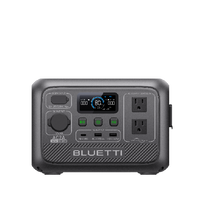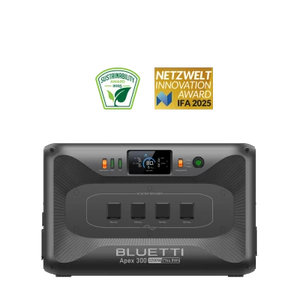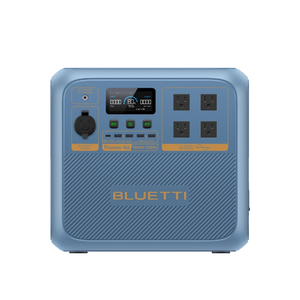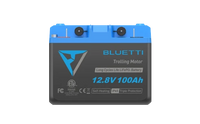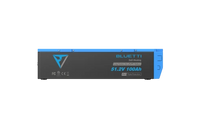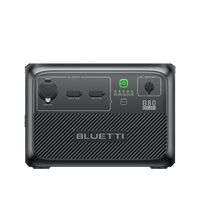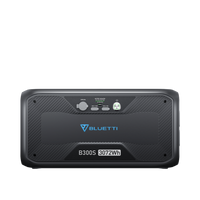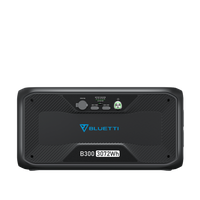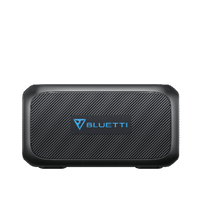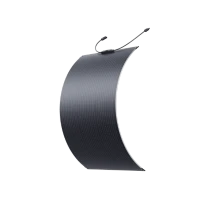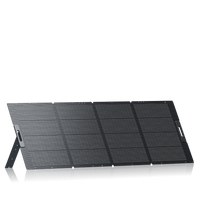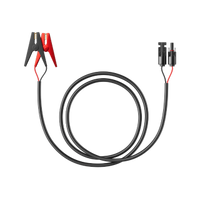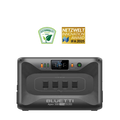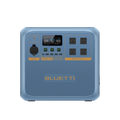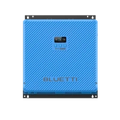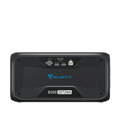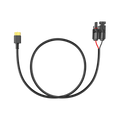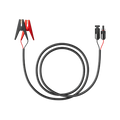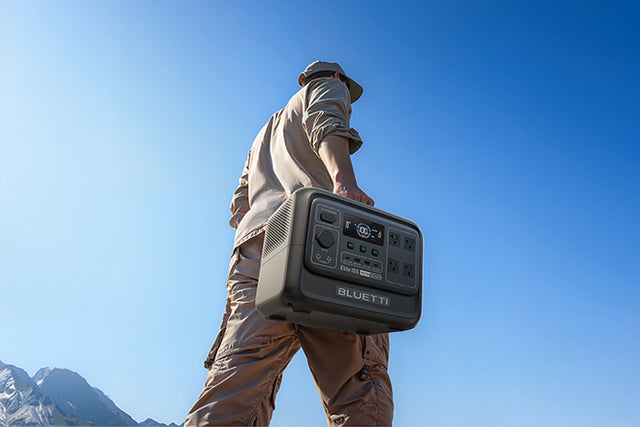Your cart is empty
Shop our productsImagine a world where homes are not only powered by clean, renewable energy but also seamlessly connected and intelligently managed.
This is where the remarkable combination of solar energy and smart home technologies comes into play.
By harnessing the sun's energy through solar panels and integrating advanced automation and connectivity, we can create smart homes that are energy-efficient, convenient, and eco-friendly.
Let's dive into the exciting realm where solar energy meets intelligent home automation and discover how this powerful fusion is shaping the future of sustainable living.
What Is A Smart Home?

A smart home is a modern residence that incorporates a wide range of internet-connected devices and technologies to automate and improve the functionality, comfort, convenience, and security of the living environment.
These devices are specifically designed to communicate with each other and can be easily controlled from a central hub, a mobile app, or by using voice commands.
Smart homes rely on a combination of hardware, software, and connectivity to establish an interconnected ecosystem.
The key components and features of a smart home include:
Internet of Things (IoT) Devices
These devices serve as the foundation of a smart home and encompass a variety of products such as smart thermostats, lighting systems, appliances (e.g., refrigerators, ovens, washing machines), security systems (e.g., cameras, door locks, motion sensors), speakers, and TVs, among others.
Central Hub/Controller
The central hub or controller acts as the intelligent core of the smart home, allowing users to manage and control all connected devices.
It serves as a unified interface through which users can monitor, adjust, and automate various aspects of their homes.
Popular examples of smart home hubs include Amazon Echo with Alexa, Google Nest Hub, and Apple HomePod.
Connectivity
Internet connectivity is essential for a smart home. Most devices connect to the home's Wi-Fi network, enabling seamless remote access and control.
Mobile Apps
Smart home systems often provide dedicated mobile applications that enable users to conveniently control and monitor their devices from anywhere.
These apps offer user-friendly interfaces, allowing adjustments of settings, scheduling tasks, receiving alerts, and accessing various automation features.
Voice Control
Many smart homes support voice control through virtual assistants such as Amazon Alexa, Google Assistant, or Apple Siri.
Users can effortlessly issue voice commands to control devices, change settings, or request information.
Automation and Scenes
Smart homes offer automation capabilities, allowing users to create routines or "scenes." For instance, with a single command like "Good Morning," users can activate a scene that turns on the lights, adjusts the thermostat, starts brewing coffee, and plays a preferred morning playlist.
Energy Efficiency
Smart homes prioritize energy efficiency by incorporating features such as learning-enabled thermostats that adapt heating and cooling based on user preferences, lighting systems that automatically turn off when a room is unoccupied, and energy monitoring devices that provide real-time information on energy consumption.
Security and Safety
Smart home security systems provide enhanced protection with features like video doorbells, surveillance cameras, motion sensors, and smart locks.
Some systems can send alerts to users' smartphones in the event of suspicious activity or emergencies, enabling remote monitoring and control of home security.
Integration and Compatibility
Smart home systems are made to be compatible with each other, ensuring seamless integration.
This enables users to create a cohesive smart home ecosystem where different devices can interact and trigger actions based on specific conditions or events.
How Can Solar Energy Be Used In A Smart Home?

Combining solar energy and smart home technologies creates a powerful synergy that leads to a more efficient and sustainable living environment.
Below we’ve listed ways these two concepts can work together:
Solar Panels and Energy Production
When solar panels are installed in a smart home, they generate clean, renewable energy by capturing sunlight and converting it into electricity.
This electricity can power various devices and appliances in the house.
With intelligent home systems, users can monitor real-time solar energy production, gaining insights into energy generation, consumption, and storage.
Energy Monitoring and Optimization
Smart home energy monitoring systems track the energy consumption patterns of devices and appliances.
By integrating solar energy production data, these systems provide a comprehensive overview of energy usage and identify opportunities for optimization.
Users can schedule high-energy activities during peak solar production hours to make the most of the available solar energy.
Energy Storage and Battery Management
Any excess energy created by solar panels during peak sun hours can be stored for later use using solar batteries.
Smart home systems monitor battery charge levels and manage the flow of energy between solar panels, battery storage, and home appliances.
This allows users to tap into stored solar energy during periods of low solar production, reducing reliance on the grid and maximizing self-consumption of renewable energy.
Smart Energy Management Systems
Integrating solar energy production data into smart energy management systems enables dynamic load balancing and energy optimization.
These systems analyze energy usage patterns, weather forecasts, and solar energy production to automatically adjust settings and control the operation of appliances, heating, cooling, and lighting.
This minimizes energy waste and maximizes the utilization of solar power.
Grid Interaction and Net Metering
Smart homes with solar panels can be connected to the electric grid. Excess solar electricity can be fed back into the grid through net metering, allowing users to receive credits or financial benefits for the surplus energy they contribute.
Smart home systems monitor and manage this interaction, ensuring a seamless energy exchange with the grid.
Integration with Smart Devices and Appliances
Solar energy systems in smart homes can be integrated with other smart devices and appliances.
For example, smart thermostats can optimize heating and cooling based on the availability of solar energy.
Smart lighting systems can adjust brightness levels according to the amount of solar power generated. This further reduces energy consumption and enhances overall efficiency.
Final Thoughts
By harnessing the power of solar panels, smart homes can generate clean, renewable energy that powers various devices and appliances within the home.
Through energy monitoring, optimization, and storage, homeowners can maximize the utilization of solar energy, reduce reliance on the grid, and optimize energy consumption.
Smart energy management systems enable dynamic load balancing and automation, further enhancing efficiency and minimizing waste.
Shop products from this article
Be the First to Know
You May Also Like

What Does a 30% Federal Solar Tax Credit Mean and How to Apply?
Governments around the world are offering programs that encourage homeowners to switch to solar energy. Among the most notable programs is the 30% Federal Solar Tax Credit. It reduces your...

Deadly Flooding Devastates U.S. South and Midwest — What You Need to Know





